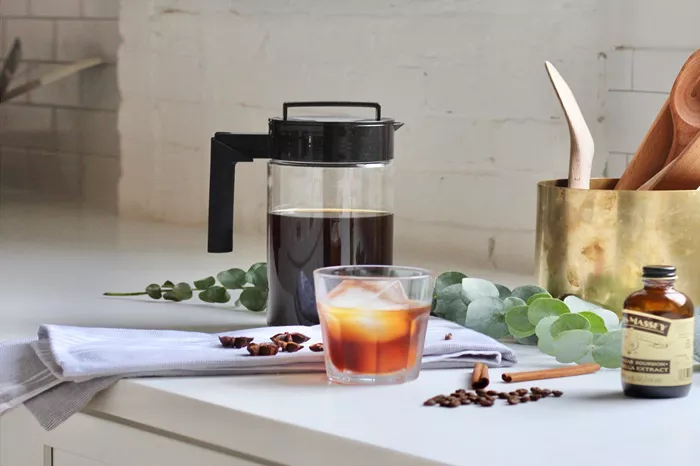Cold brew coffee has gained immense popularity in recent years due to its smooth, low-acid flavor and refreshing qualities. While most cold brew recipes recommend using coarse-ground coffee, fine ground coffee cold brew offers a unique twist that enhances extraction and flavor complexity. This article explores the science behind fine ground coffee cold brew, its health benefits, brewing techniques, and why it might be the perfect choice for coffee enthusiasts.
What Is Cold Brew Coffee?
Cold brew coffee is made by steeping coffee grounds in cold or room-temperature water for an extended period—typically 12 to 24 hours. Unlike traditional hot brewing methods, cold brew does not rely on heat to extract flavors, resulting in a smoother, less acidic beverage.
The Difference Between Cold Brew and Iced Coffee
Many people confuse cold brew with iced coffee, but they are fundamentally different:
Iced Coffee: Brewed hot and then chilled, often leading to a more acidic and bitter taste.
Cold Brew: Steeped in cold water, producing a naturally sweeter, mellower flavor.
Why Use Fine Ground Coffee for Cold Brew?
Traditionally, cold brew is made with coarse grounds to prevent over-extraction and bitterness. However, fine ground coffee can be used effectively with adjustments to brewing time and technique.
Benefits of Fine Ground Coffee in Cold Brew
Enhanced Extraction – Finer particles increase surface area, allowing for better flavor extraction in a shorter time.
Richer Flavor Profile – More oils and solubles are extracted, contributing to a fuller-bodied taste.
Faster Brewing Time – While coarse grounds require 18-24 hours, fine grounds may only need 8-12 hours.
Potential Drawbacks
Over-Extraction Risk – If steeped too long, fine grounds can make the brew bitter.
Filtration Challenges – Fine particles can clog filters, requiring a finer mesh or multiple filtration steps.
The Science Behind Cold Brew Extraction
Understanding extraction helps in optimizing fine ground coffee cold brew.
How Extraction Works
Solubles – Coffee contains acids, sugars, oils, and caffeine, which dissolve at different rates.
Temperature’s Role – Heat accelerates extraction, but cold water selectively extracts fewer acids, reducing bitterness.
Grind Size Impact – Finer grinds speed up extraction, but without heat, the process remains balanced.
Caffeine Content in Cold Brew
Contrary to popular belief, cold brew does not always have more caffeine than hot coffee. The caffeine content depends on:
Brew Ratio – More coffee grounds increase caffeine.
Steeping Time – Longer steeping extracts more caffeine.
Grind Size – Fine grounds release caffeine faster.
Health Benefits of Cold Brew Coffee
Cold brew offers several health advantages over hot-brewed coffee, especially when using fine grounds for optimal nutrient extraction.
Lower Acidity
Gentler on Stomach – Cold brew has up to 67% less acid, reducing heartburn and digestive discomfort.
Better for Teeth – Less acid means less enamel erosion.
Antioxidant Properties
Chlorogenic Acids – These antioxidants help reduce inflammation and improve metabolism.
Reduced Oxidation – Cold brewing preserves more antioxidants compared to hot brewing.
Improved Mental Alertness Without Jitters
Slow Caffeine Release – Cold brew provides a smoother energy boost without sudden crashes.
Lower Tannin Levels – Tannins, which can cause bitterness and stomach irritation, are less extracted in cold brew.
How to Make Fine Ground Coffee Cold Brew
Ingredients & Equipment
Fine ground coffee (freshly ground preferred)
Filtered water (for better taste)
Large jar or pitcher
Fine mesh filter, cheesecloth, or paper filter
Step-by-Step Brewing Guide
Choose the Right Ratio – A 1:4 coffee-to-water ratio works well (e.g., 100g coffee to 400ml water).
Combine Coffee and Water – Stir to ensure all grounds are saturated.
Steep at Room Temperature – 8-12 hours is ideal for fine grounds (longer can lead to bitterness).
Filter Thoroughly – Use a fine mesh strainer followed by a paper filter for clarity.
Dilute and Serve – Cold brew concentrate can be mixed with water or milk.
Tips for Best Results
Experiment with Time – Start with 8 hours and adjust based on taste preference.
Store Properly – Keep in the fridge for up to two weeks.
Try Different Beans – Lighter roasts may highlight fruity notes, while dark roasts offer chocolatey richness.
Common Mistakes to Avoid
Using Stale Coffee
Freshly ground beans ensure maximum flavor. Pre-ground coffee loses aroma quickly.
Skipping Proper Filtration
Fine grounds can make the brew muddy if not filtered well.
Over-Steeping
Fine grounds extract faster; exceeding 12 hours can make the brew harsh.
Conclusion
Fine ground coffee cold brew is an excellent alternative for those seeking a quicker, more flavorful cold brew experience. While it requires careful attention to steeping time and filtration, the result is a rich, aromatic coffee with all the health benefits of traditional cold brew. By experimenting with ratios and brew times, coffee lovers can find their perfect balance of strength and smoothness.
Whether you’re a cold brew novice or a seasoned enthusiast, trying fine ground coffee in your next batch could unlock new dimensions of flavor and convenience. Cheers to a smoother, healthier cup of coffee!、
Related topics:
How to Make Chocolate Cream Cold Brew at Home
How to Make Tim Hortons Cold Brew


